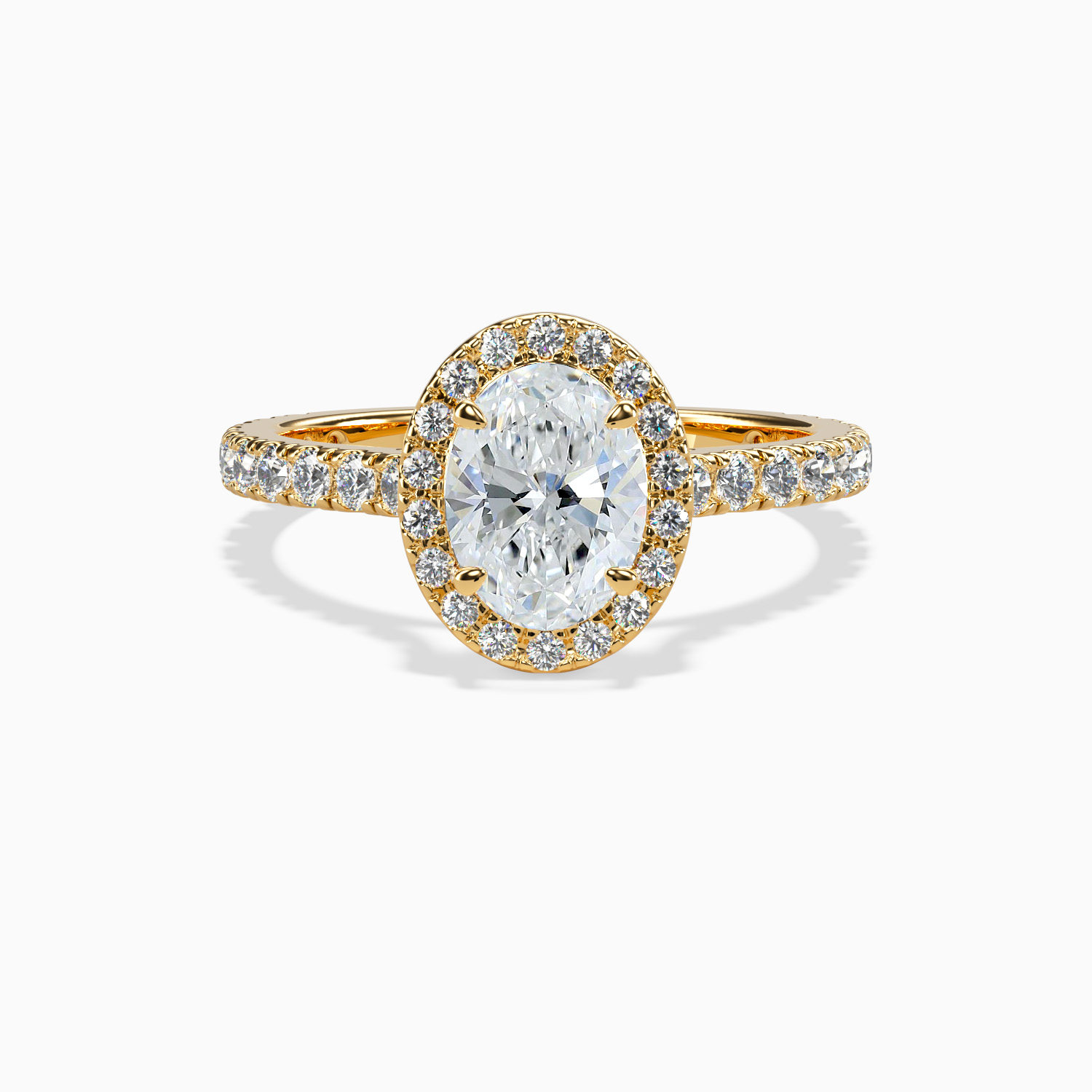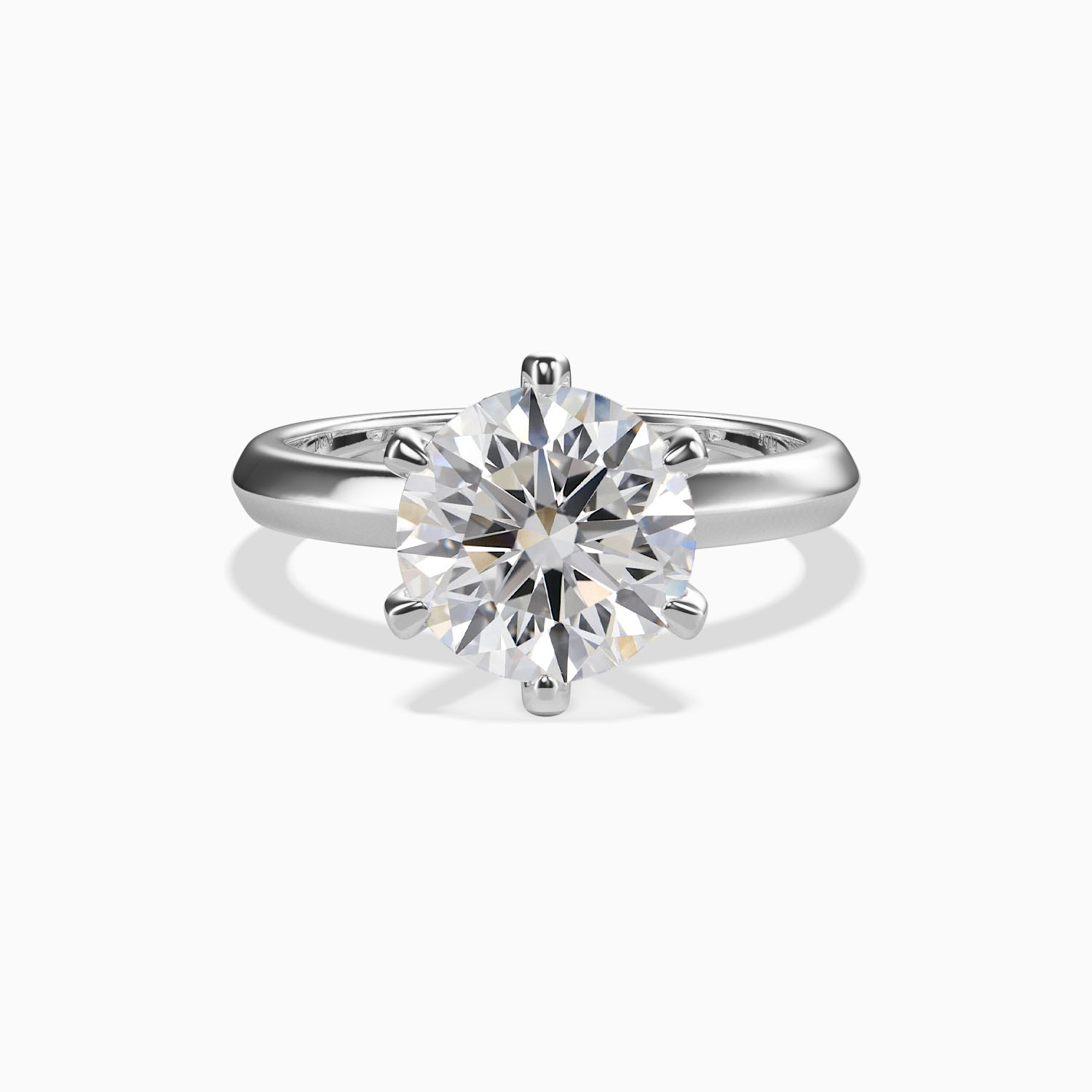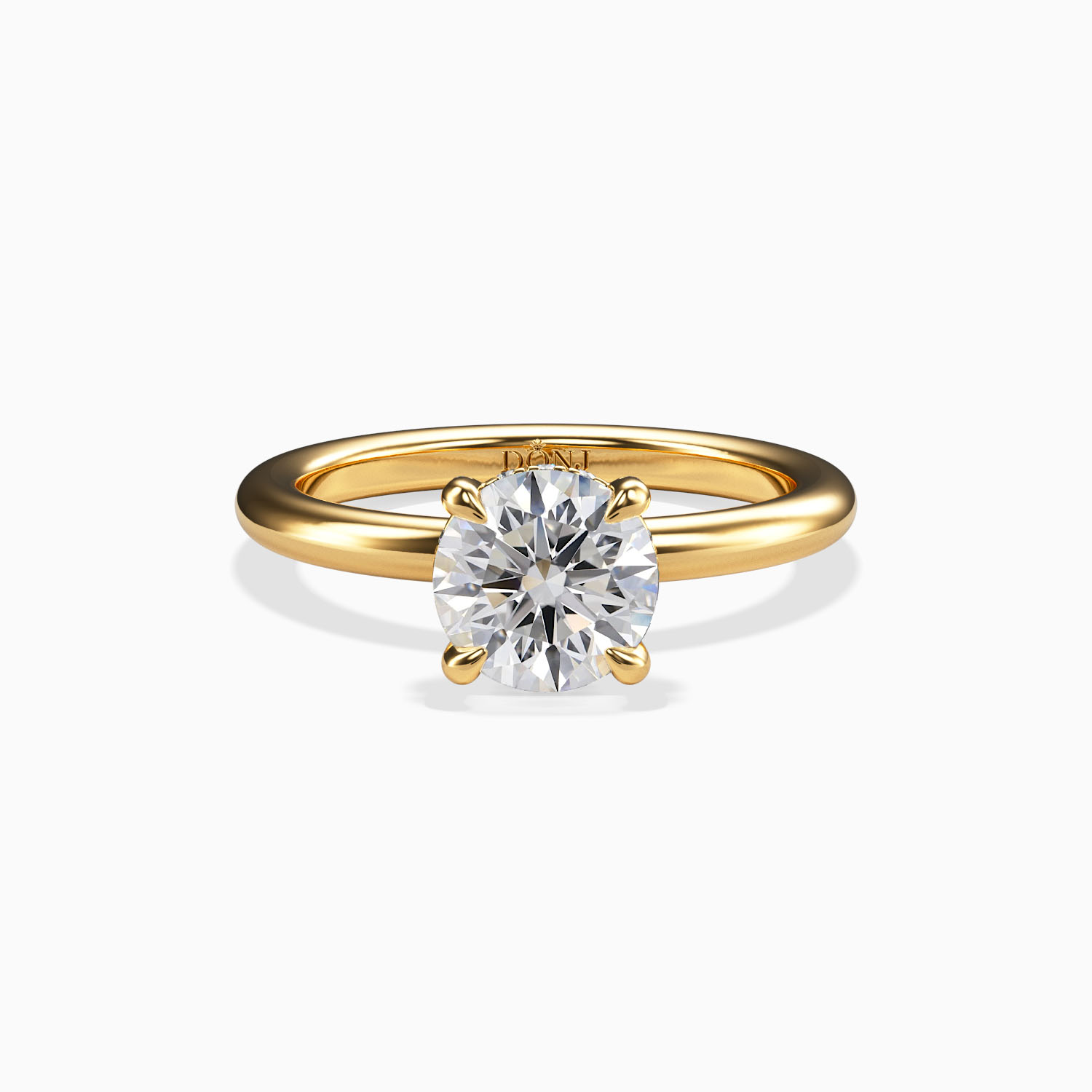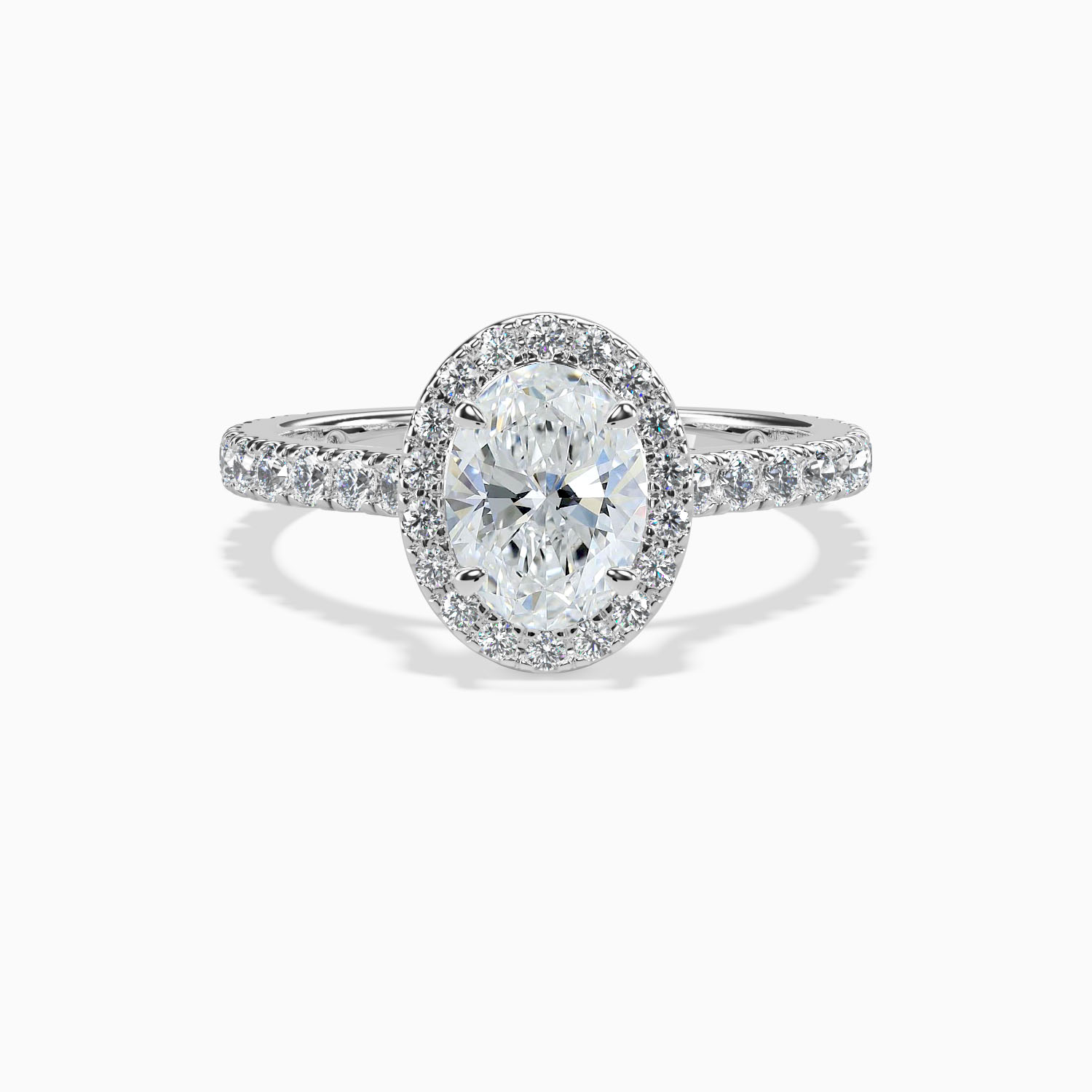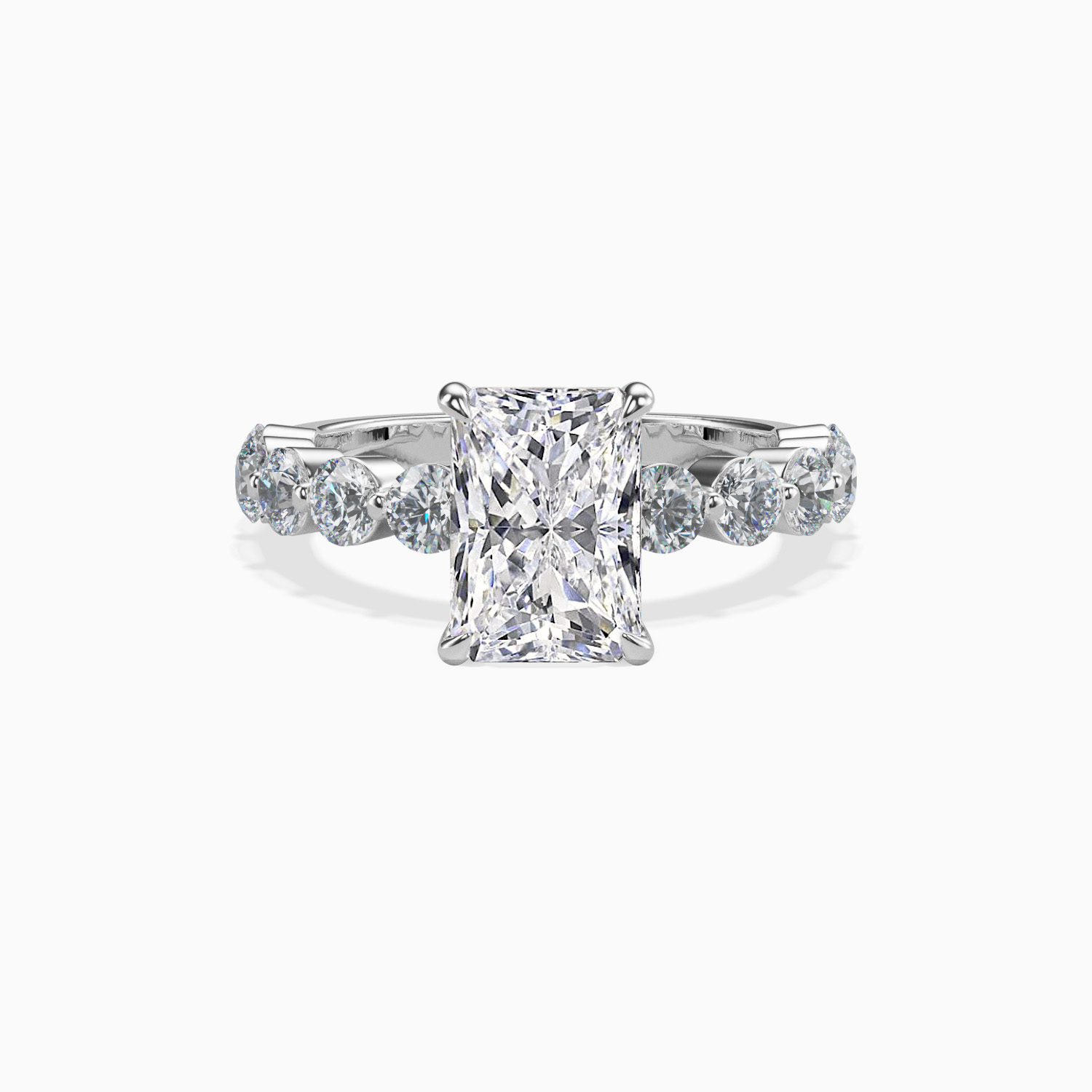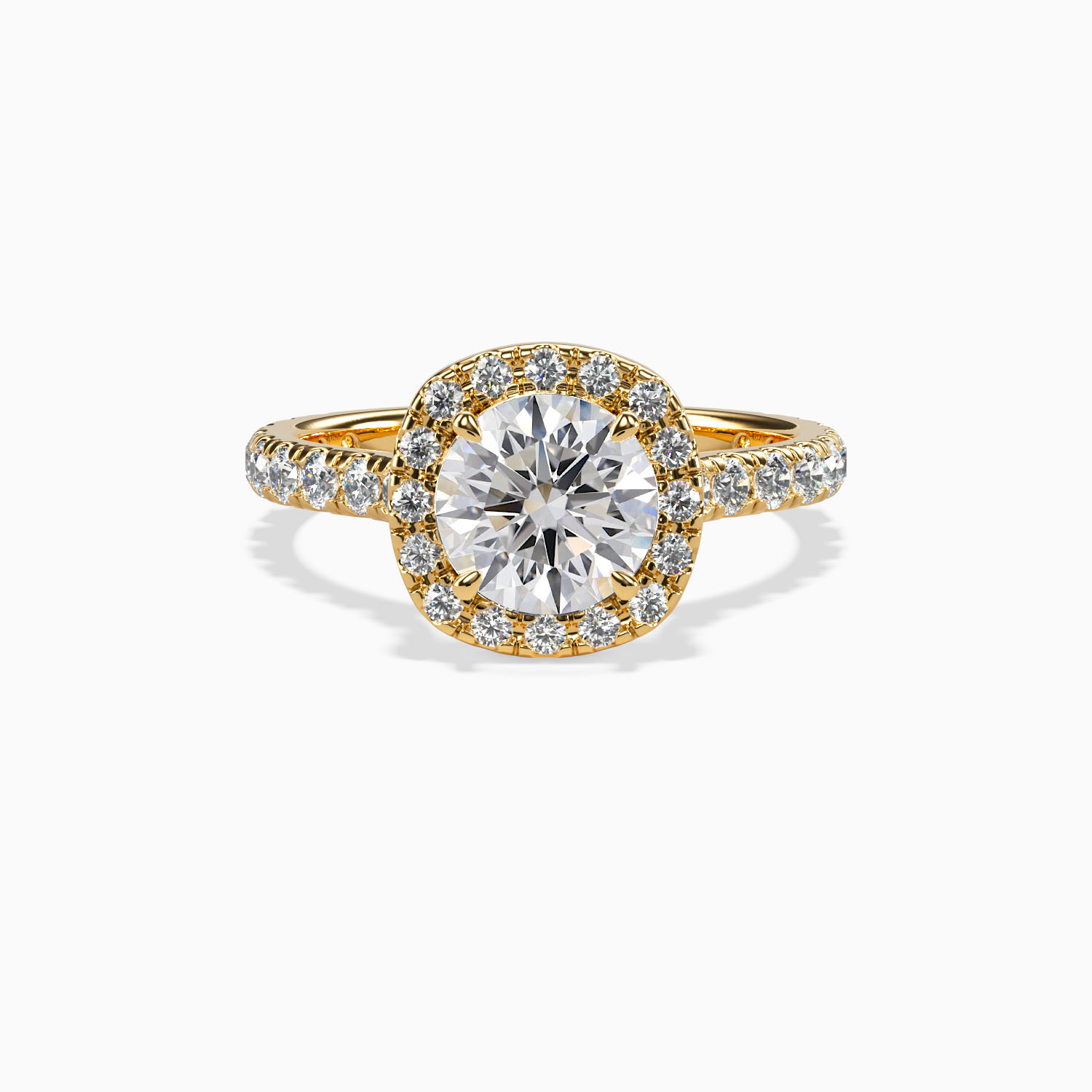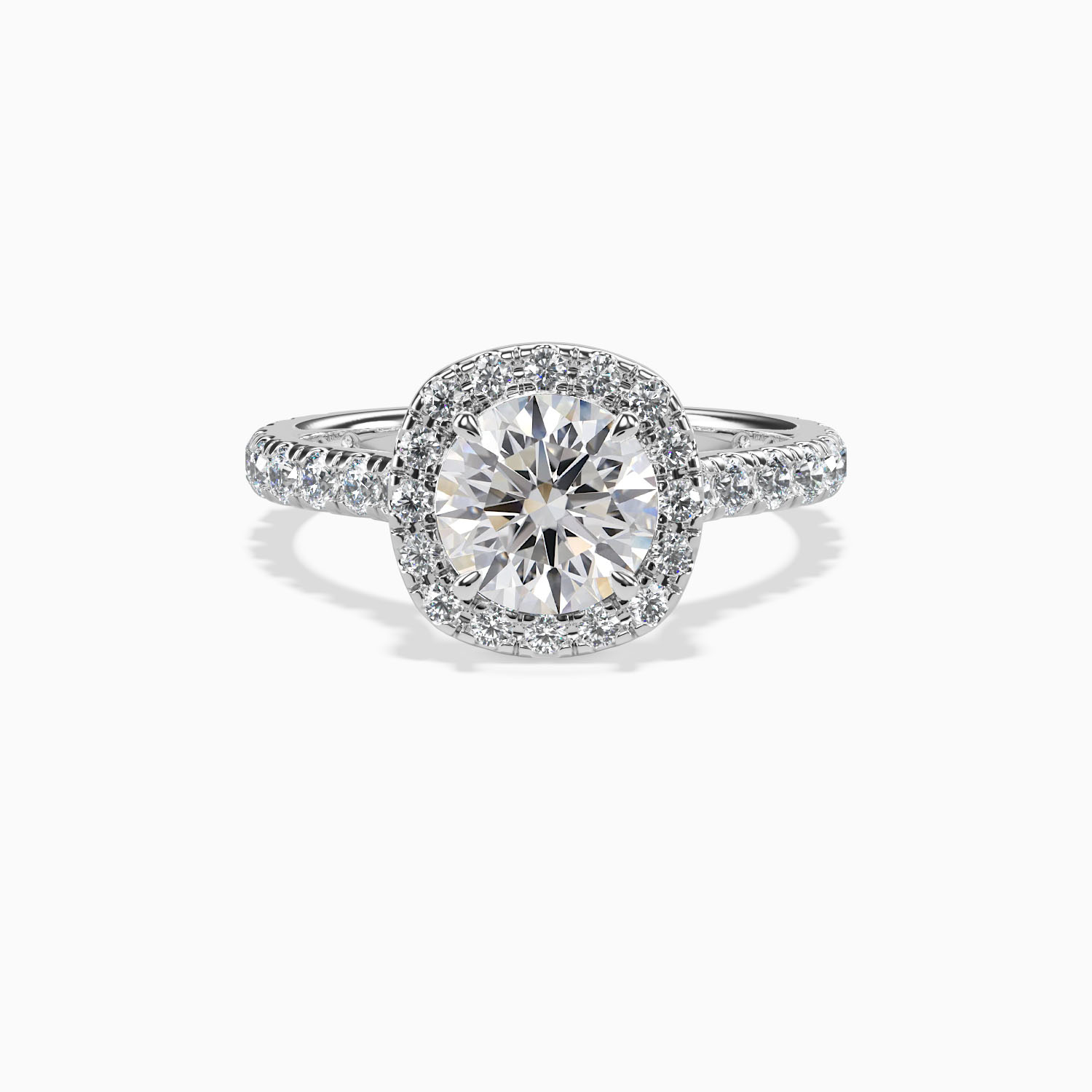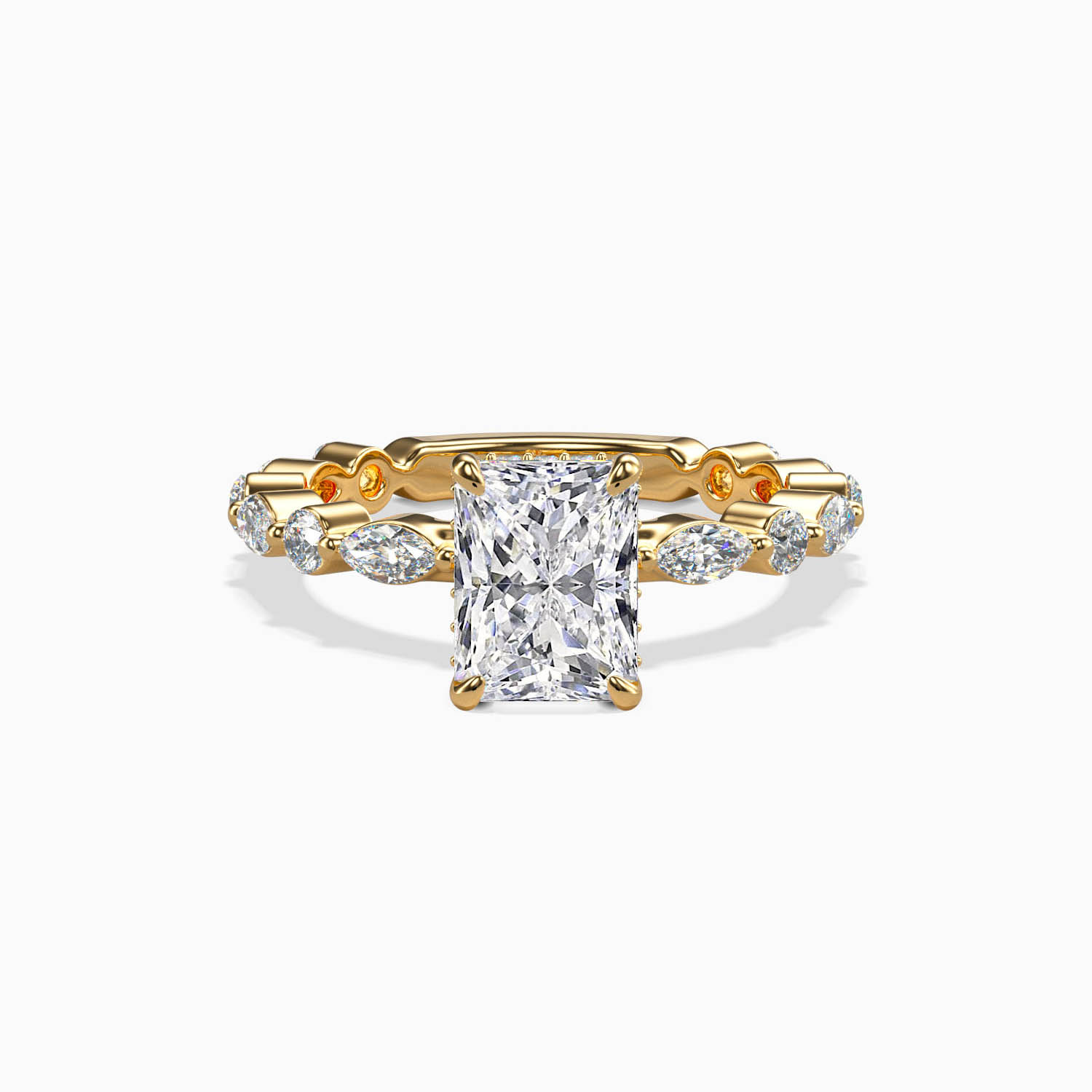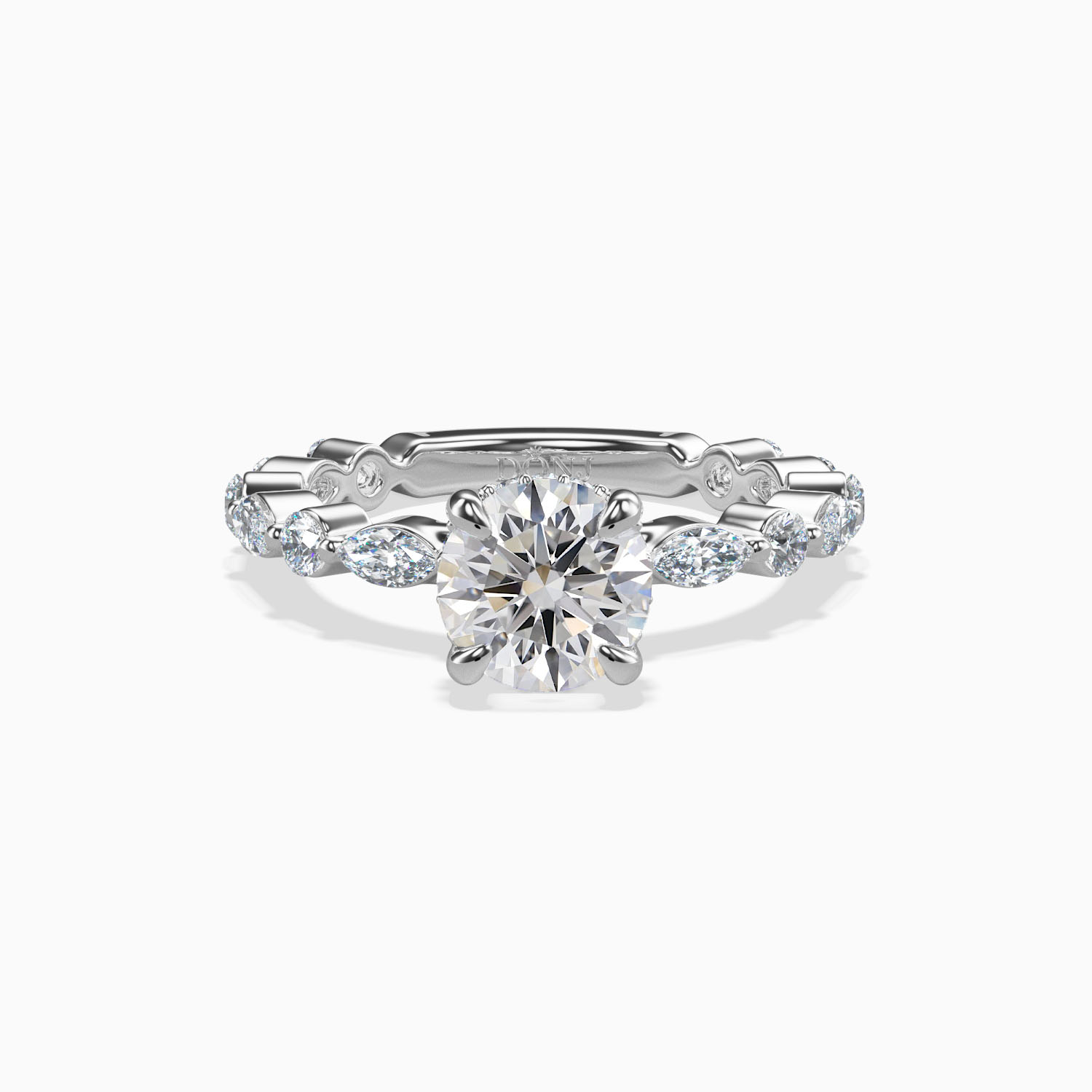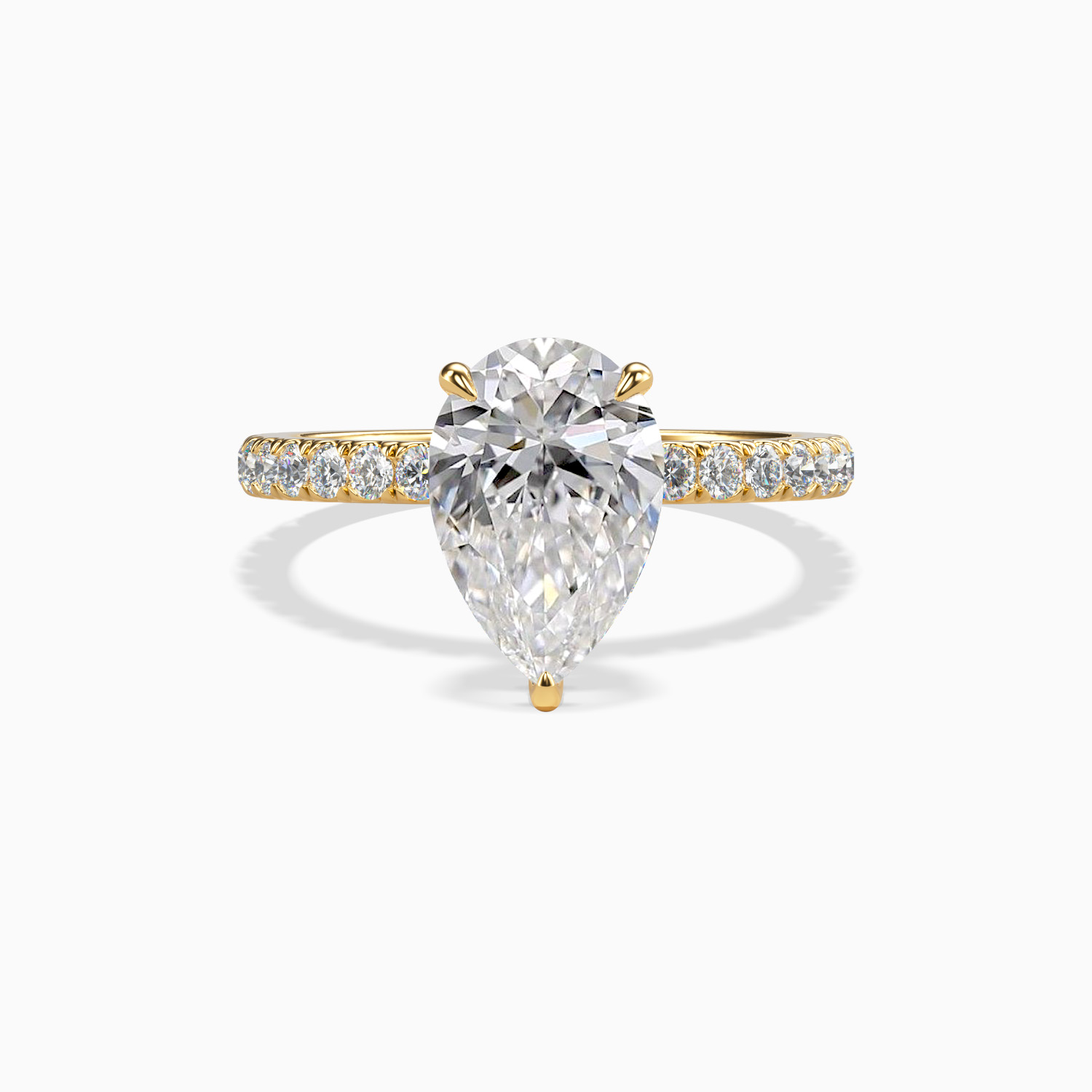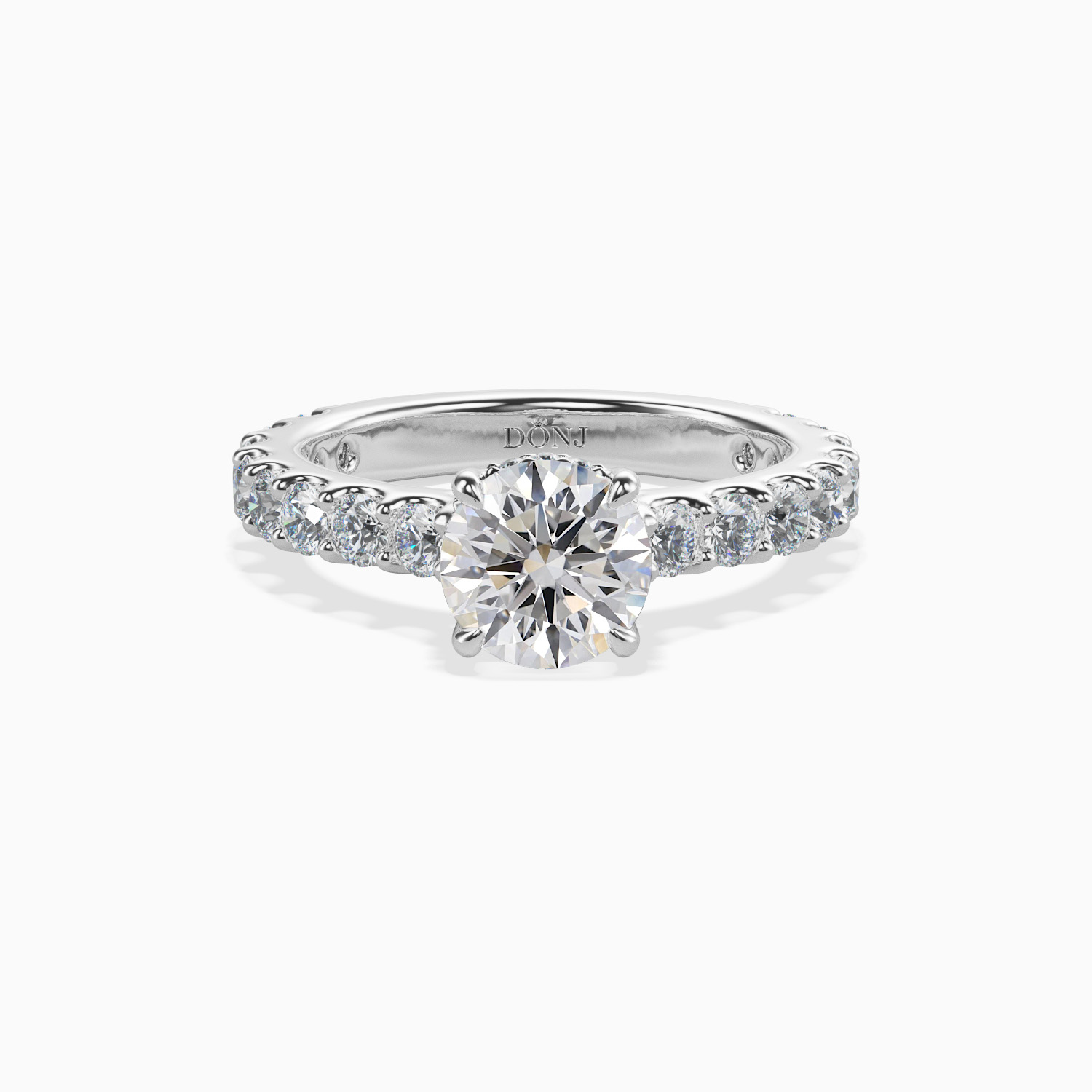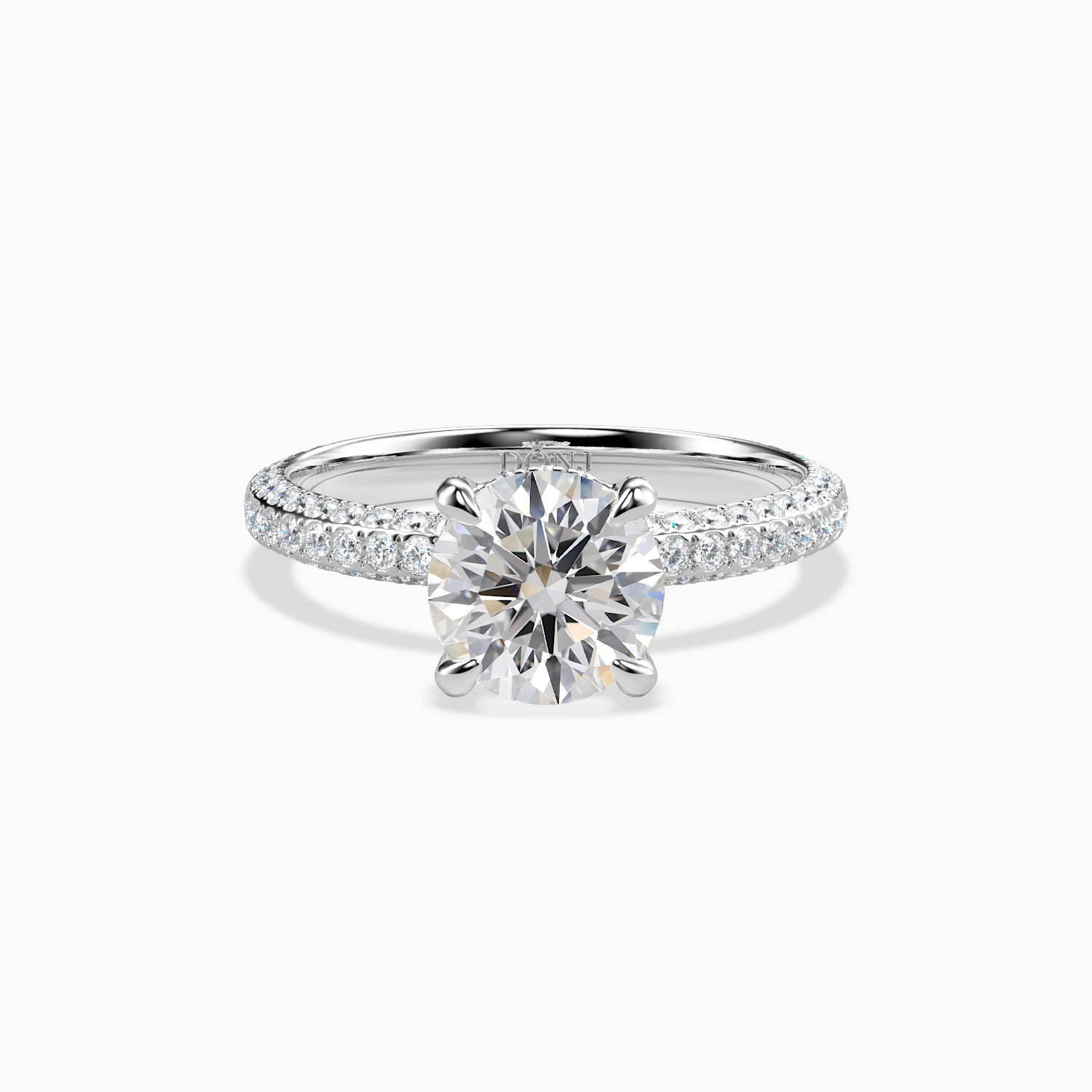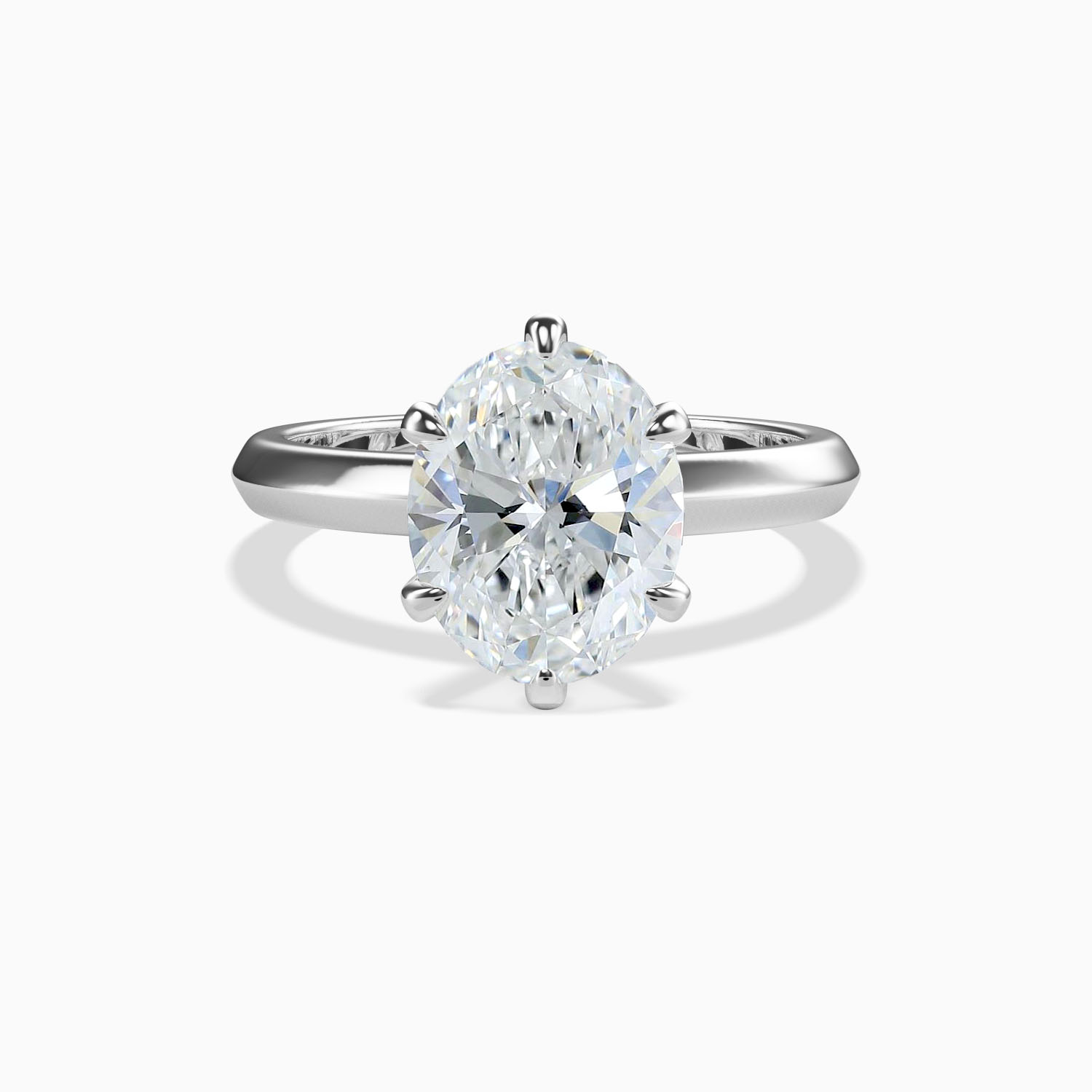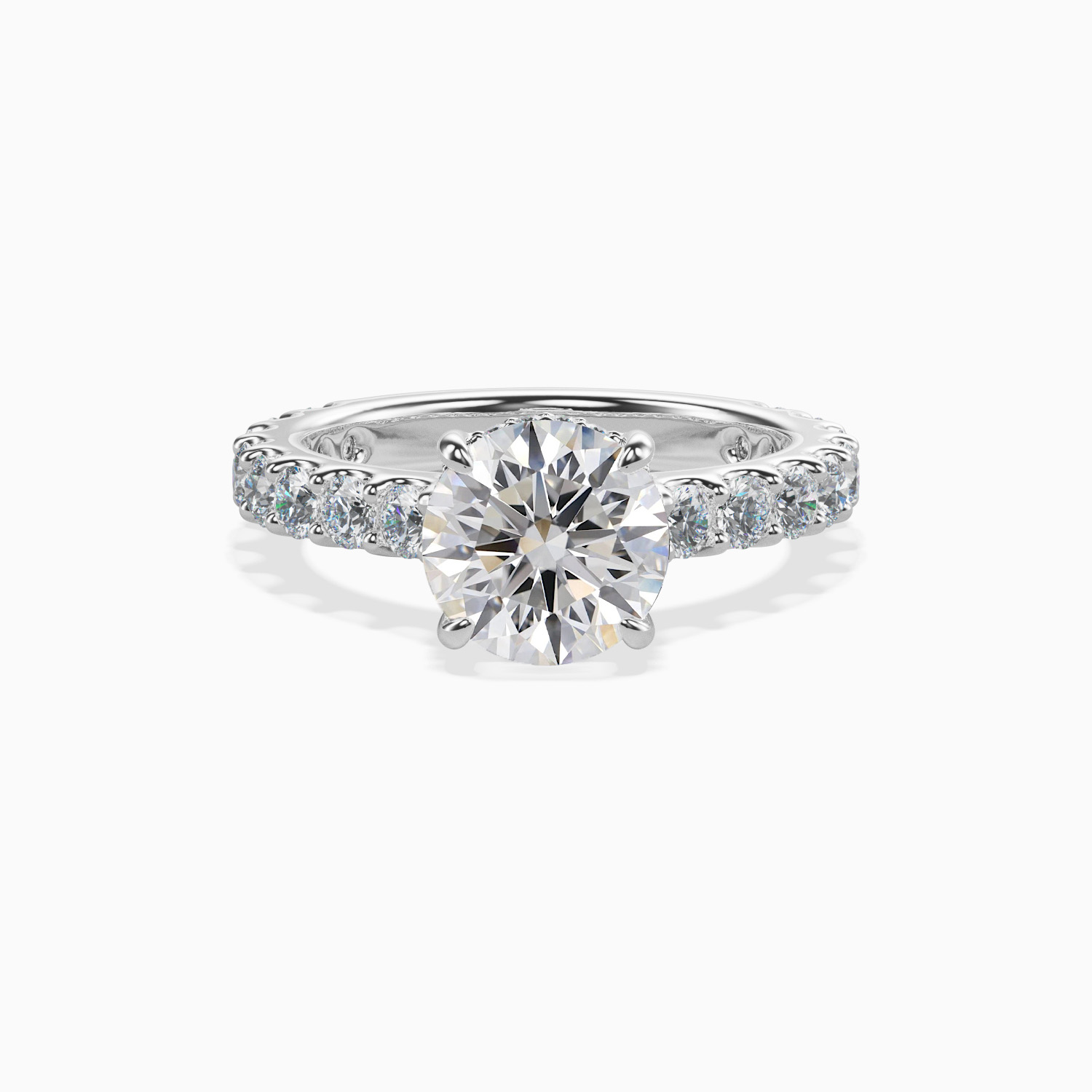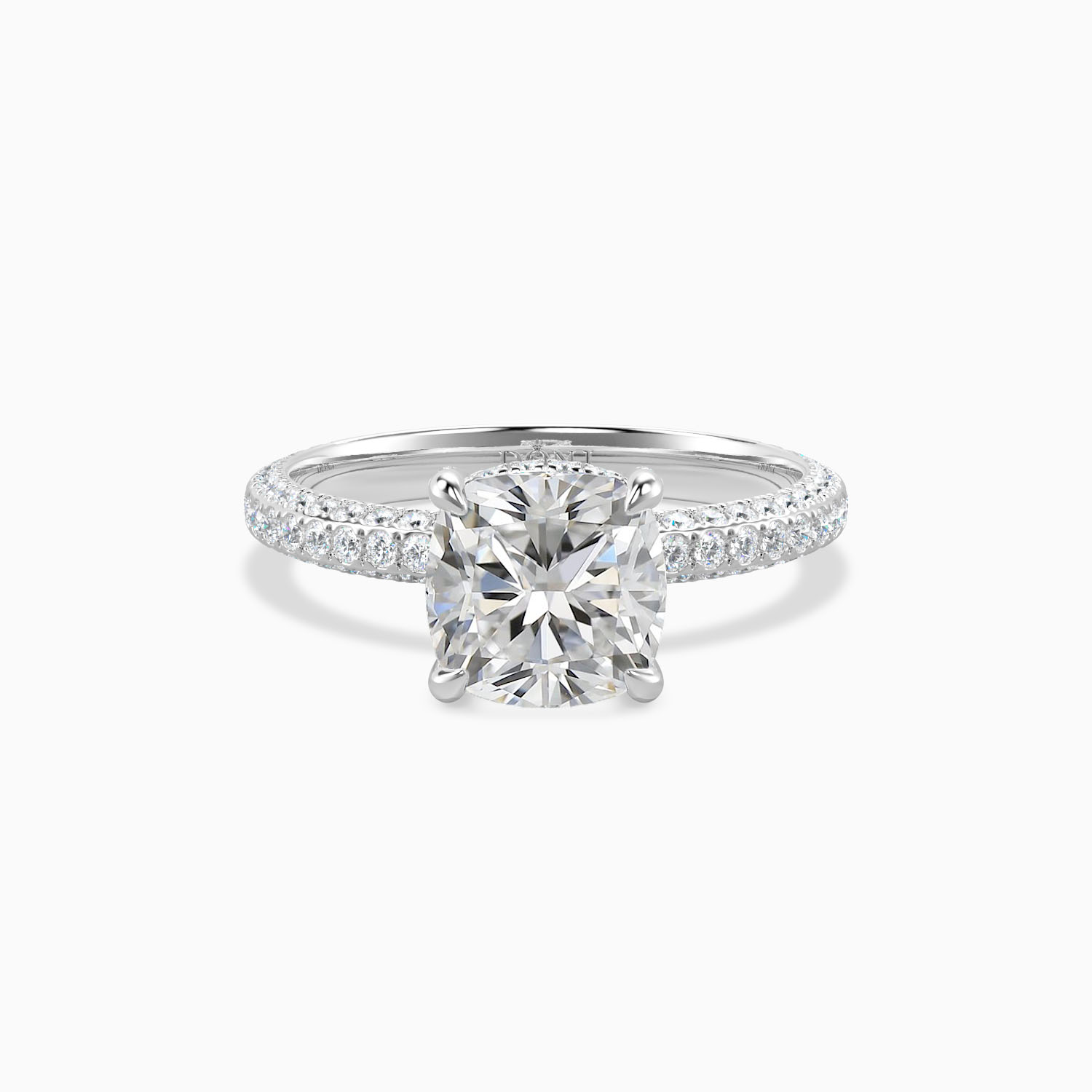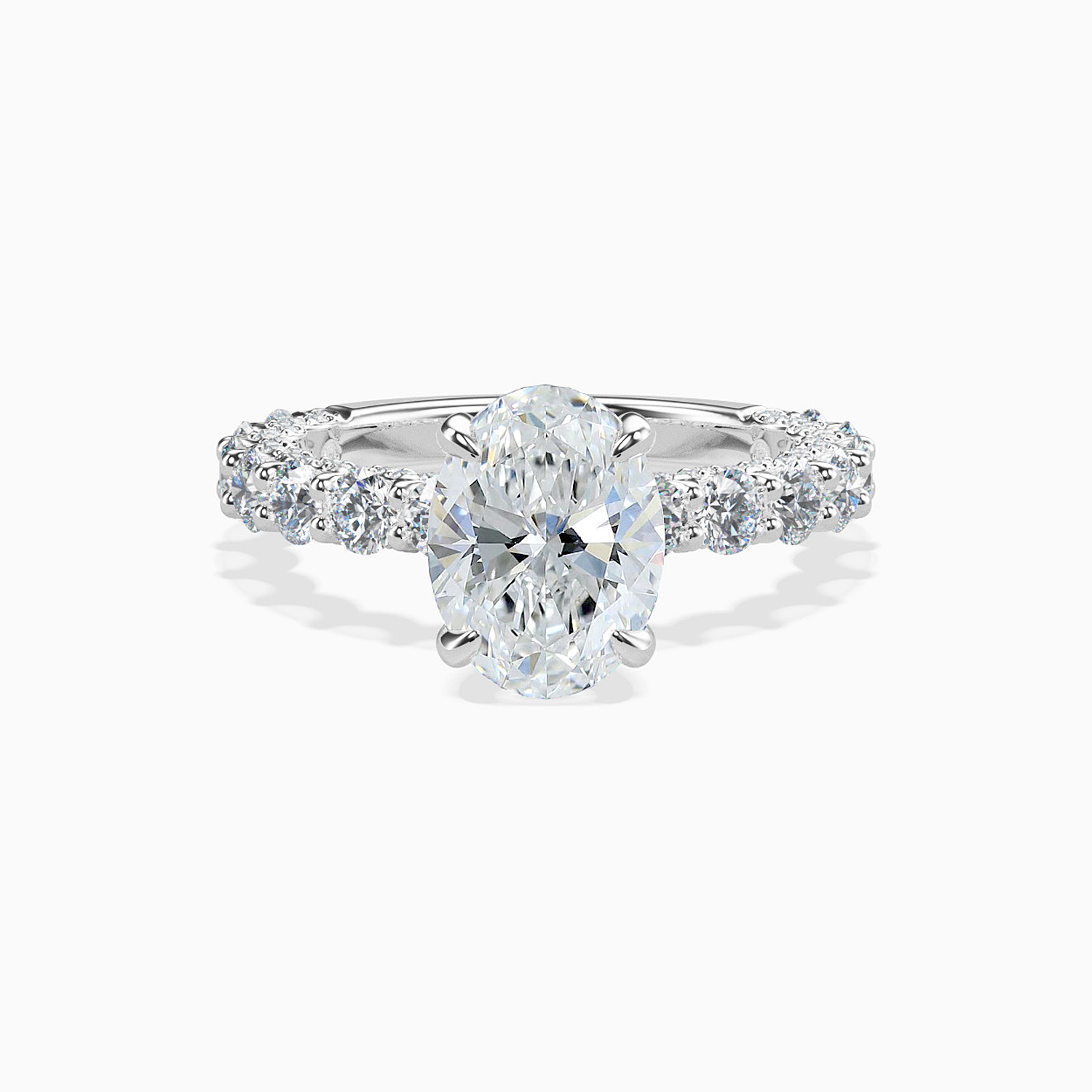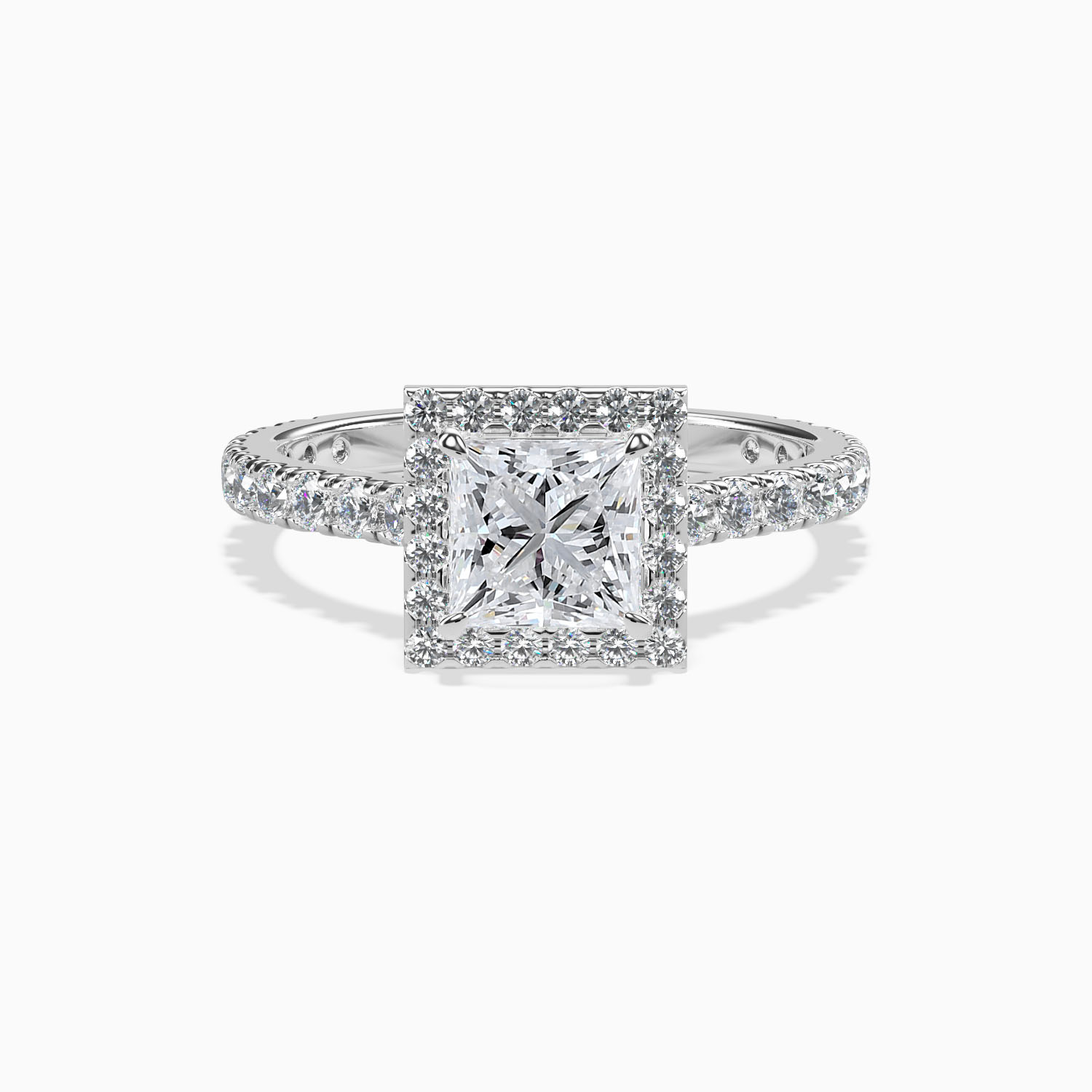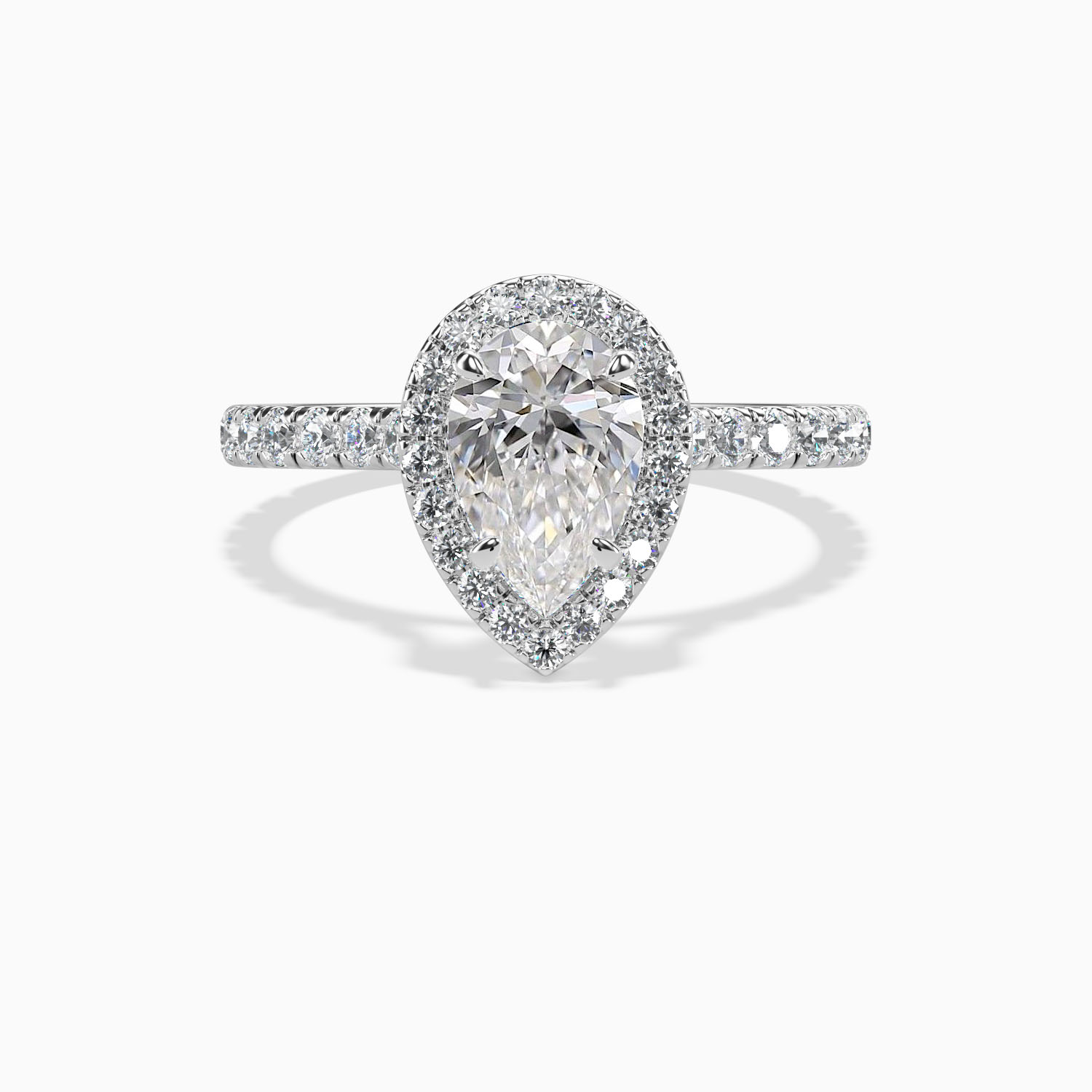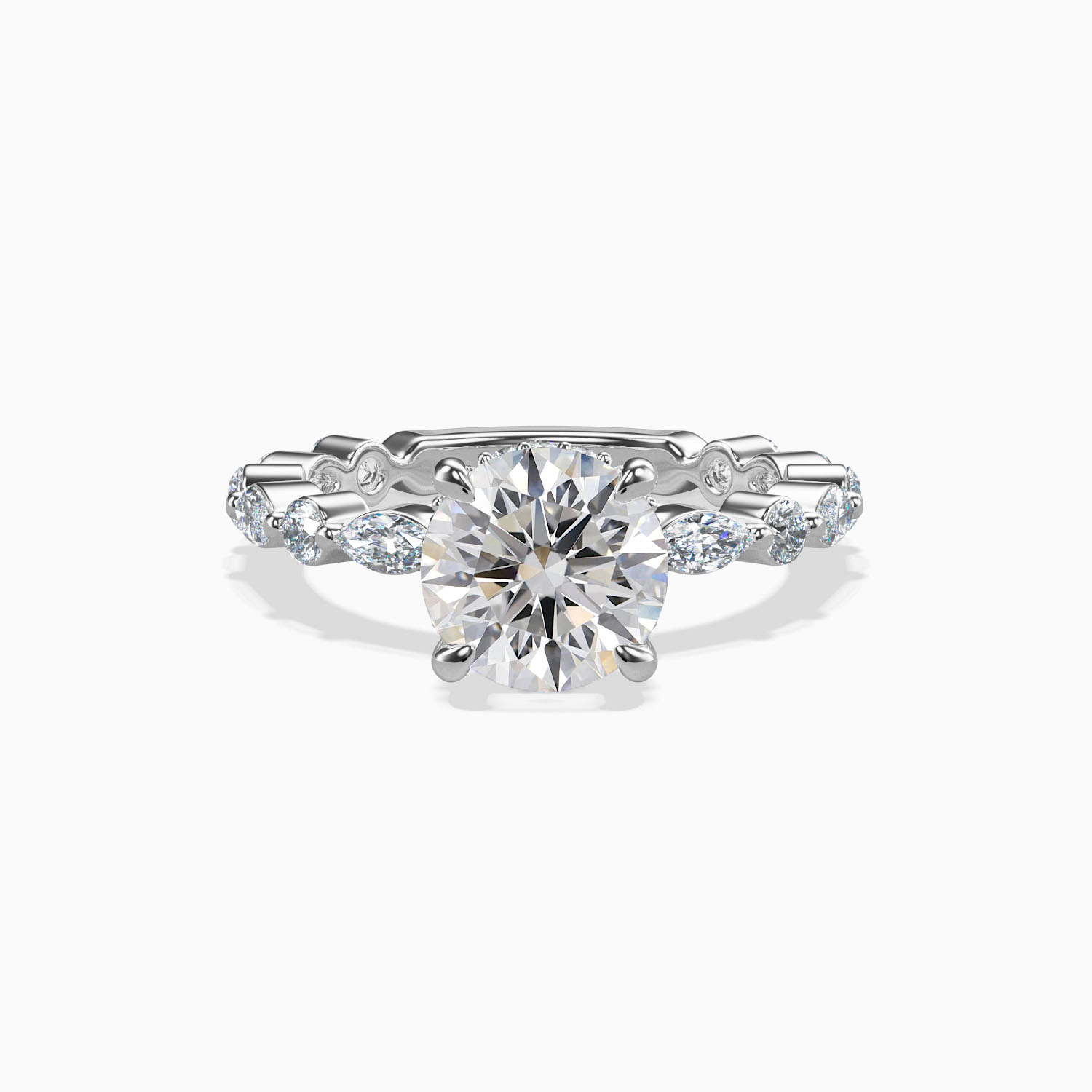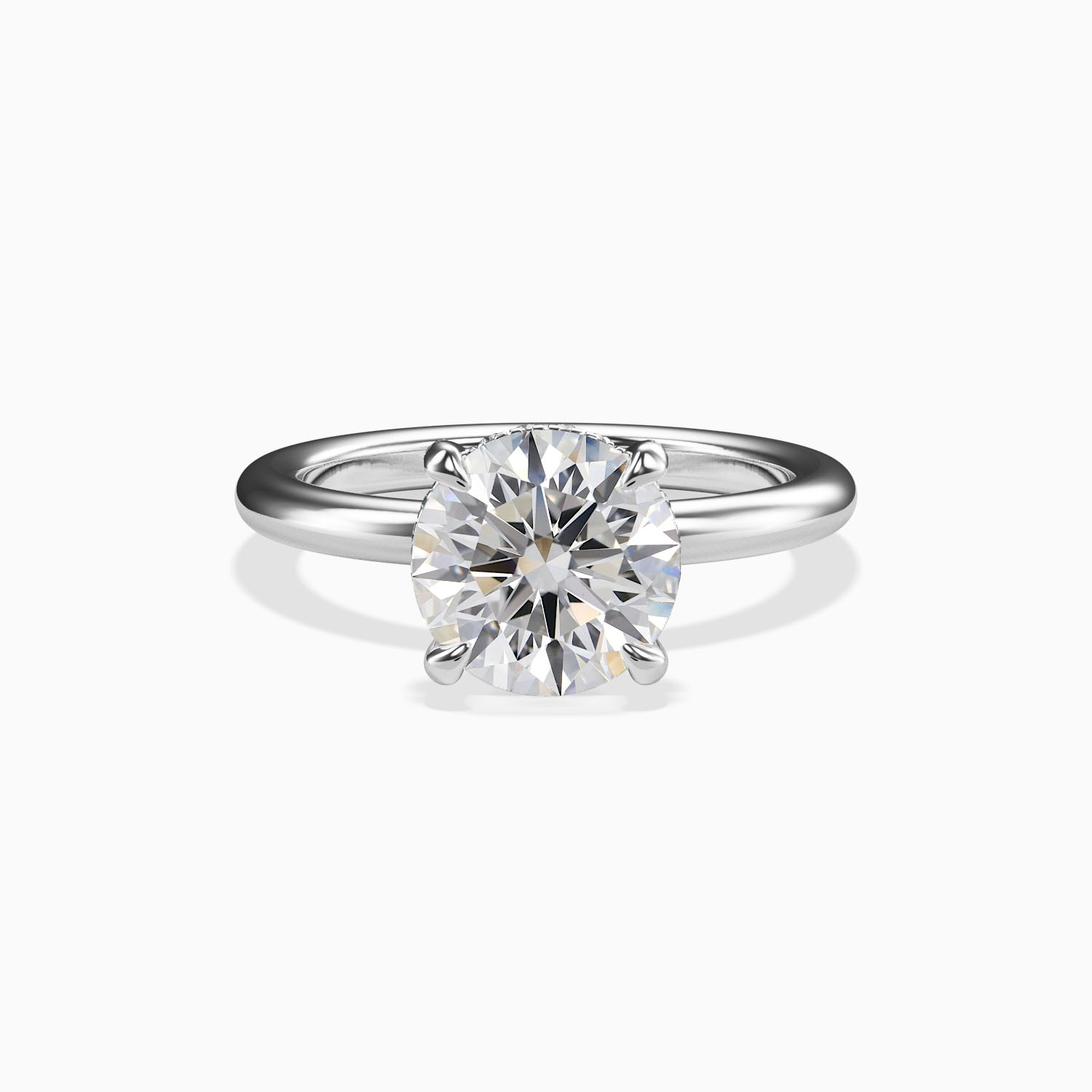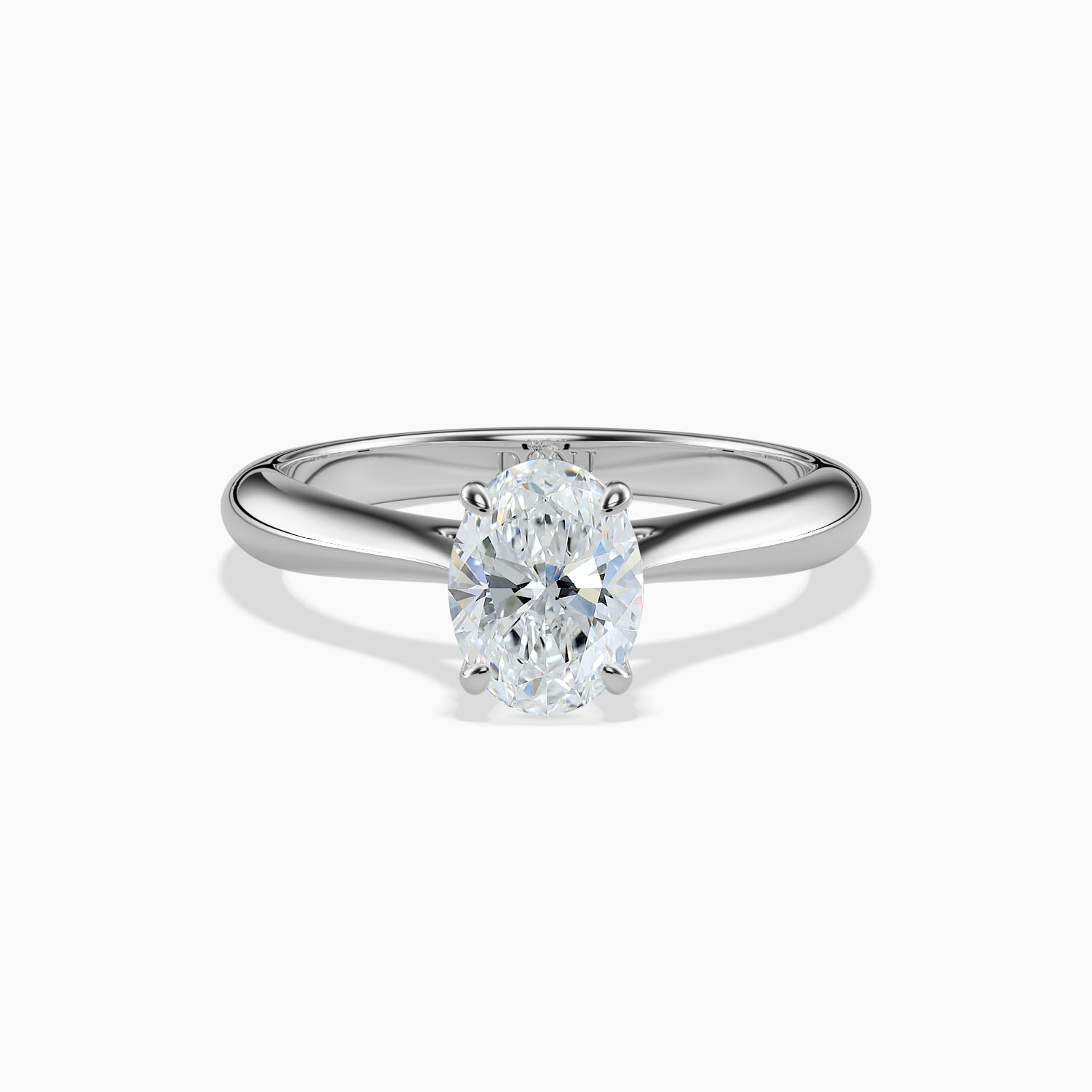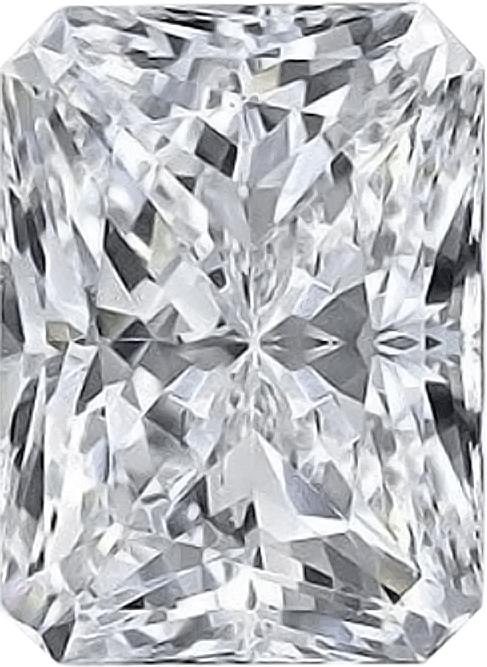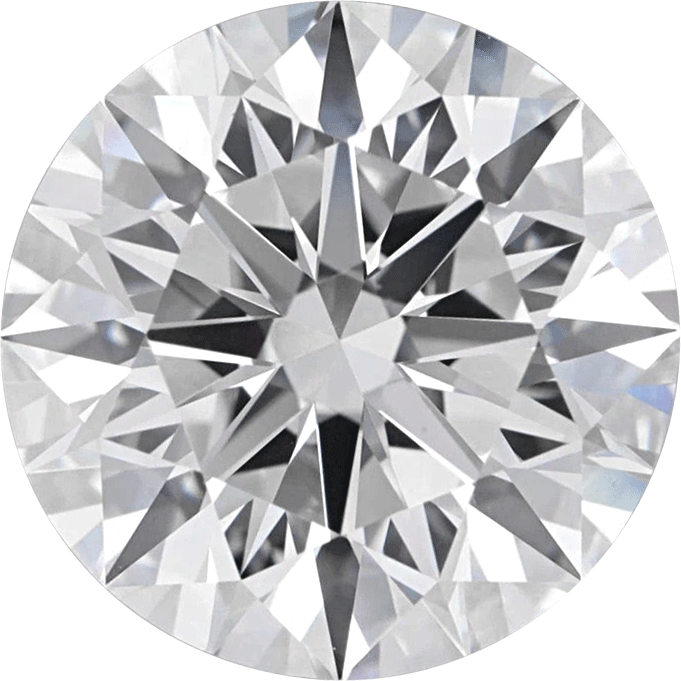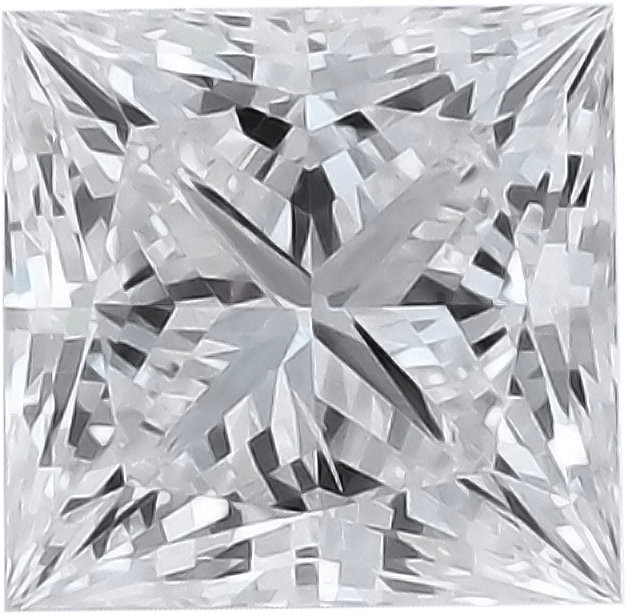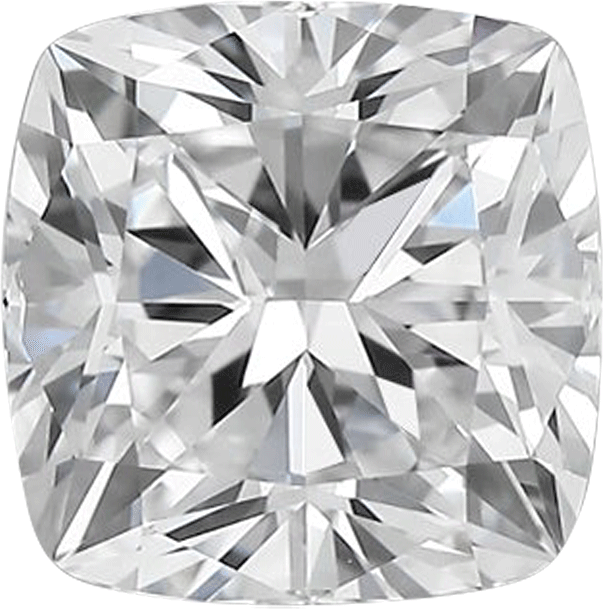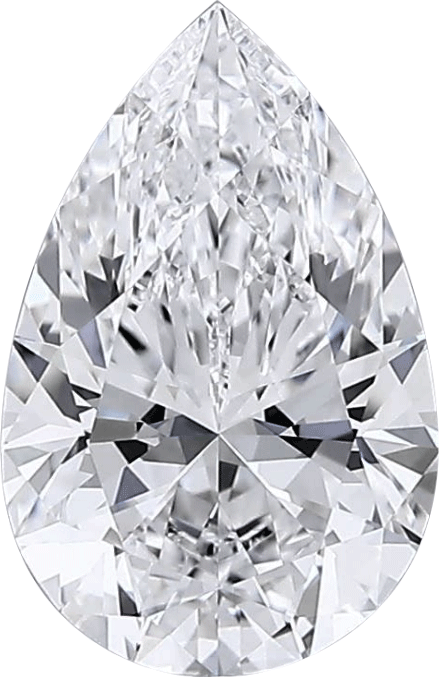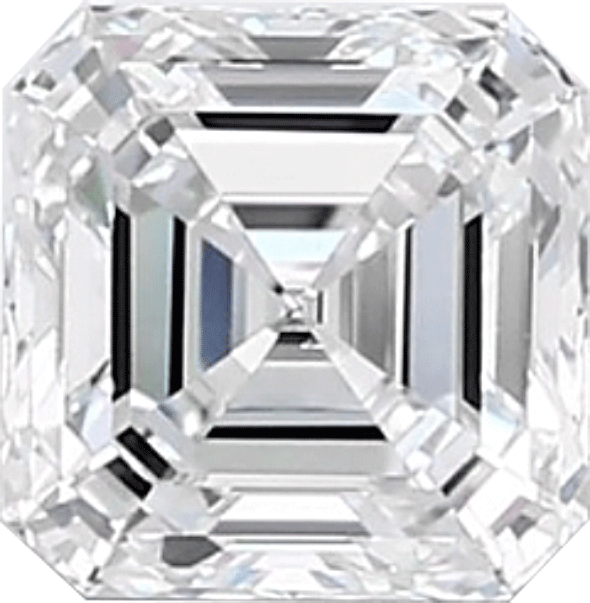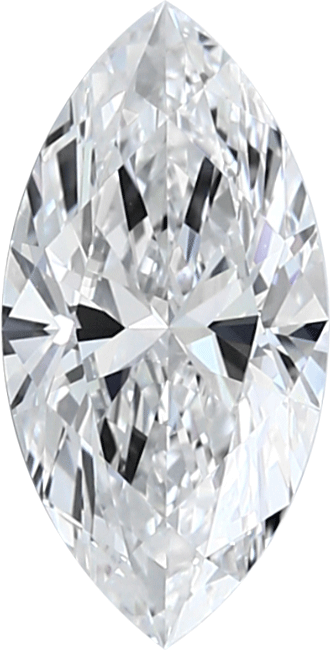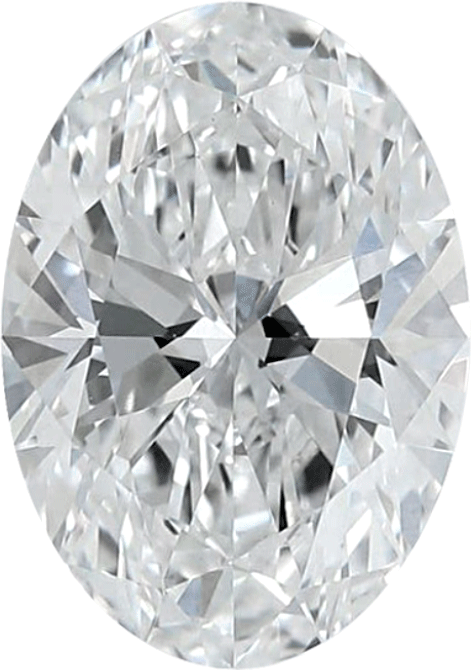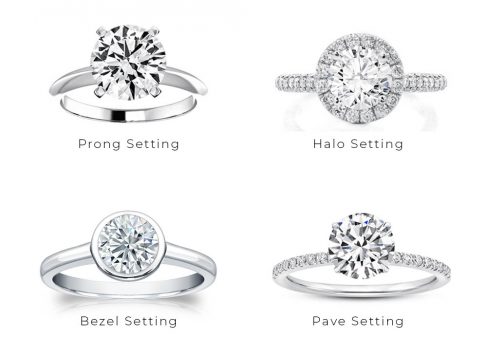
timeless & modern designs
engagement rings
design your own engagement ring
Timeless & Modern Designs in stunning 360° HD


What Is a Lab grown Diamond?
If you’re curious about what a lab-grown diamond is, you’ve come to the right place!
As the name suggests, lab grown diamonds aren’t mined from deep within the Earth but made in a laboratory. Lab diamond is also referred to by other names such as man-made diamonds, lab-created diamonds, lab grown diamonds, and so on.
Lab grown diamonds are a sustainable and environmentally better option compared to earth-mined diamonds. There’s no difference between laboratory diamonds and mined-diamonds, except for their point of origin. Both lab diamonds and earth-mined diamonds score a perfect 10 on the Mohs Scale, signifying the exact similarity between the two.
Lab grown diamonds have the same chemical, optical, and physical properties as their traditionally mined counterparts. Even when grown in a controlled laboratory setting, the growing process of lab diamonds mimics the growth process of their earth-mined counterparts.
Read More
Overnight Delivery for a Timeless Promise
SHOP LAB DIAMONDS
Buy lab-grown diamonds that blend luxury with ethical craftsmanship.
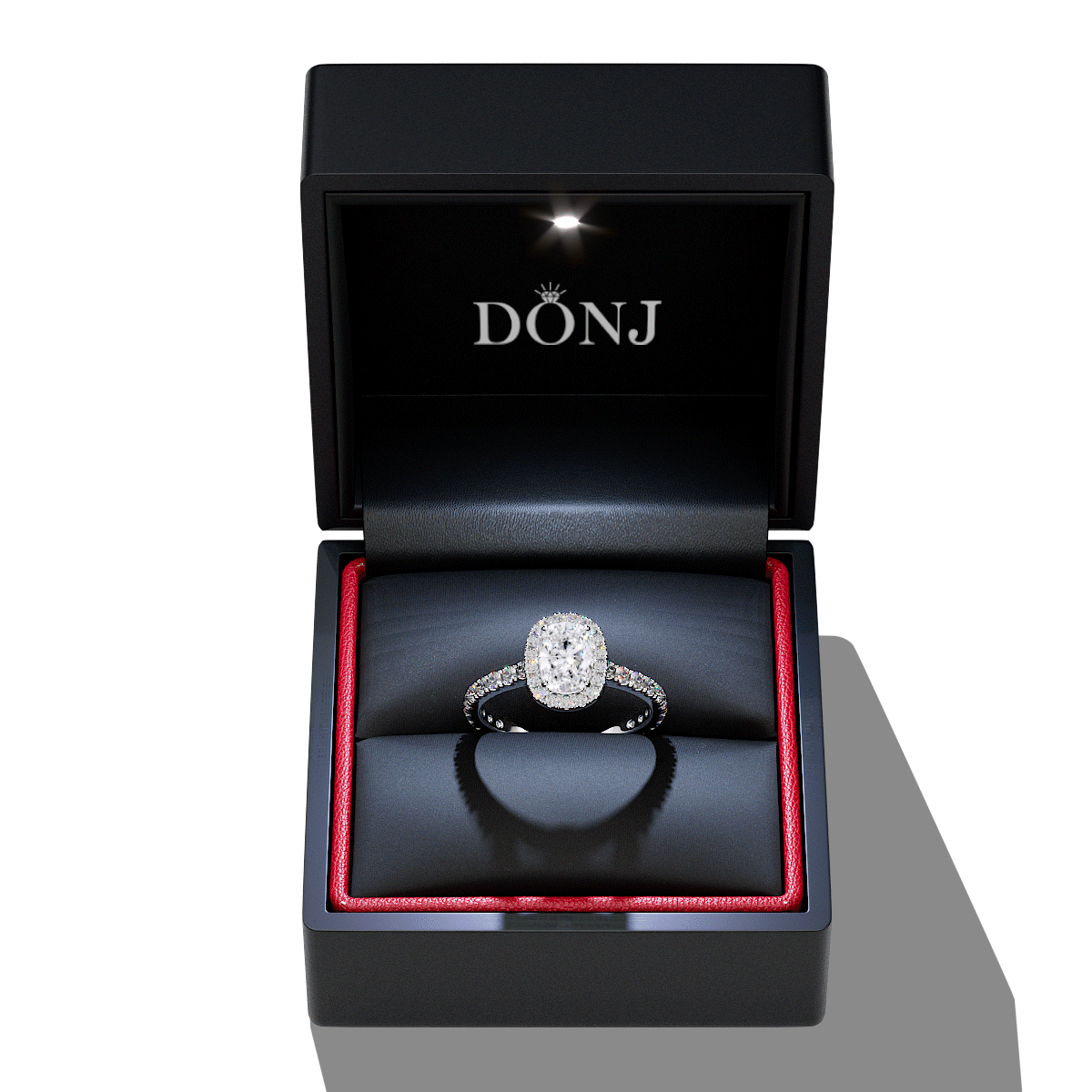
SHOP WITH CONFIDENCE
✓ QUALITY PACKAGING WITH AN LED LIGHT BOX
✓ LED LIGHT BOX
✓ 45 DAY HASSLE FREE RETURNS
✓ 45 DAY HASSLE FREE RETURNS
✓ CERTIFIED DIAMOND REPORT
✓ DIAMOND REPORT
✓ INSURANCE APPRAISAL REPORT
✓ APPRAISAL REPORT
✓ LIFETIME WARRANTY
✓ LIFETIME WARRANTY
✓ FREE SHIPPING
✓ FREE SHIPPING
Custom Lab Grown Diamond Engagement Ring Designing Tool

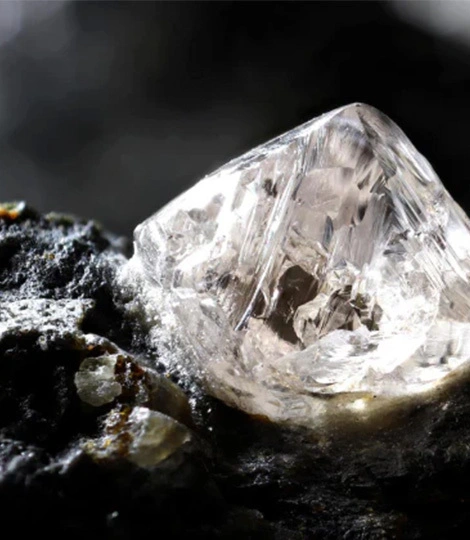
How Lab Grown Diamonds Are Created?
Lab grown diamonds, as the name suggests, are created in a laboratory in a controlled environment using two methods – Chemical Vapor Deposition (CVD) or High Pressure, High Temperature (HPHT)
It is one of the primary methods used to create lab grown diamonds. This process mimics the extreme heat and pressure conditions found at Earth’s core. It is a thermodynamic process in which a diamond seed is placed in a specialized press containing pure carbon.
The growth chamber is then subjected to pressures above 870,000 pounds/square inch and heat ranging from 1300 to 1600 Degrees Celsius. It results in carbon melting and attaching to the diamond in 14 varied directions, creating a rough diamond.
It is a relatively newer, economical, and sustainable method of producing lab grown diamonds.
It uses a specialized vacuum chamber filled with carbon-heavy gases, which, when heated to around 800-1,000 Degrees Celsius, turn into plasma, releasing tiny bits of carbon pieces.
These carbon pieces form layers onto the diamond seed, growing a diamond. The CVD Process produces extremely rare Type IIA diamonds, and at Donj Jewellery we follow this method to produce high-quality lab grown diamonds.
Why Choose Donj Jewellery for Lab Grown Diamonds?
At Donj Jewellery, we offer an exquisite collection of lab grown diamond jewellery, redefining luxury and eloquence for our new-age customers without compromising on traditional hallmarks of customer satisfaction, quality, and sustainability.
Quality
We craft each piece to perfection, thanks to our rigorous quality control processes that guarantee every item meets the highest quality standards.
With us, you get beautiful lab grown diamond jewellery that’s made to last for generations to come!
Sustainability
Our laboratory grown diamonds have a negligible impact on the environment compared to traditional mining. By choosing us, you’re making a conscious decision to save the environment and support sustainable practices.
Affordability
Experience luxury with diamond jewelry from Donj Jewellery without breaking the bank. Our laboratory grown diamonds offer the same level of purity, brilliance, and quality as the mined-diamonds without the hefty price tag
Lab Grown Diamonds Vs. Mined Diamonds
When discussing differences between lab grown diamonds vs natural diamonds, there are several aspects to consider.
From the origins of lab created diamonds to how are lab created diamonds made, these are the few distinctions to take note of –

Lab Grown Diamonds
Origin: Lab-created diamonds are created inside a laboratory using advanced machinery and technology.
Creation Process: Lab grown diamonds are grown using two processes, namely HPHT and CVD Methods. These processes, in a way, mimic extreme temperatures found within Earth’s crust where mined diamonds are formed.
Ethical Considerations: Lab grown diamonds are considered relatively more ethical as their creation doesn’t raise social or environmental concerns like its natural counterpart.
Price: Lab grown diamonds are generally cheaper than earth-mined diamonds of similar carat size and quality due to reduced production and logistics costs.
Availability: Lab grown diamonds of various sizes, shapes, and qualities are easily available and at an economical price range. The lab creation process allows more control over their aesthetic characteristics.

Earth Mined Diamonds
Origin: Earth-mined diamonds, as the name refers, are mined from deep within the Earth’s crust.
Creation Process: Earth-mined diamonds are formed due to extreme heat and temperature within Earth’s crust, causing carbon particles to fuse and form natural diamonds.
Ethical Considerations: The mined diamonds industry has long been in the news for implementing unethical mining practices, including labor exploitation and links to conflict zones.
Price: Earth-mined diamonds can be way more expensive than lab-created diamonds due to extensive mining operational costs, supply chain dependency, and labor costs.
Availability: The availability of Earth-mined diamonds is scarce, and their rarity is what sets them apart. While mined diamonds are still extracted, their scarcity is also the reason for their hefty price tag.
Benefits of Lab Grown Diamonds
Still unsure if lab grown diamonds are the right choice? Let us show you why Donj Jewellery’s lab created diamond jewelry is the perfect way to indulge in timeless elegance and ethical luxury.
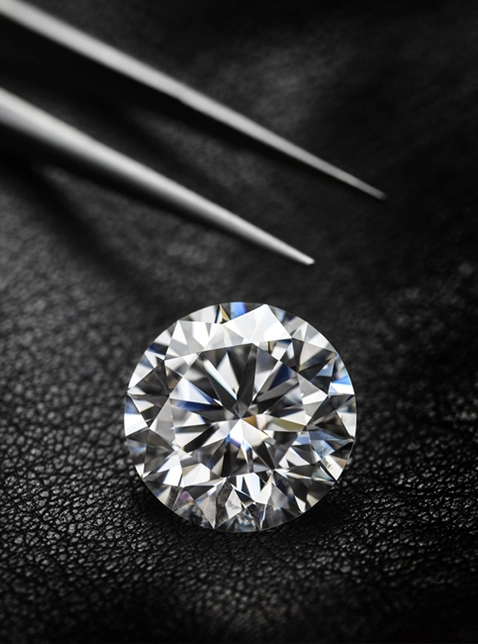
why choose lab-grown diamonds?
Lab grown diamonds are the future of the diamond industry.
At Donj Jewellery, we understand your concerns about deciding to go with natural stone or something that’s created inside a lab. However, rest assured that lab grown diamonds are the same as earth-mined diamonds – optically, chemically, and physically.
Except for the age, you’re not missing out on anything when choosing laboratory grown diamonds. The best part is you can buy larger carat weight diamonds at a lower price point.
We have an exquisite collection of lab made diamond rings, lab grown diamonds jewelry, lab diamond chains, lab created gemstones, lab grown diamond engagement rings, and more.
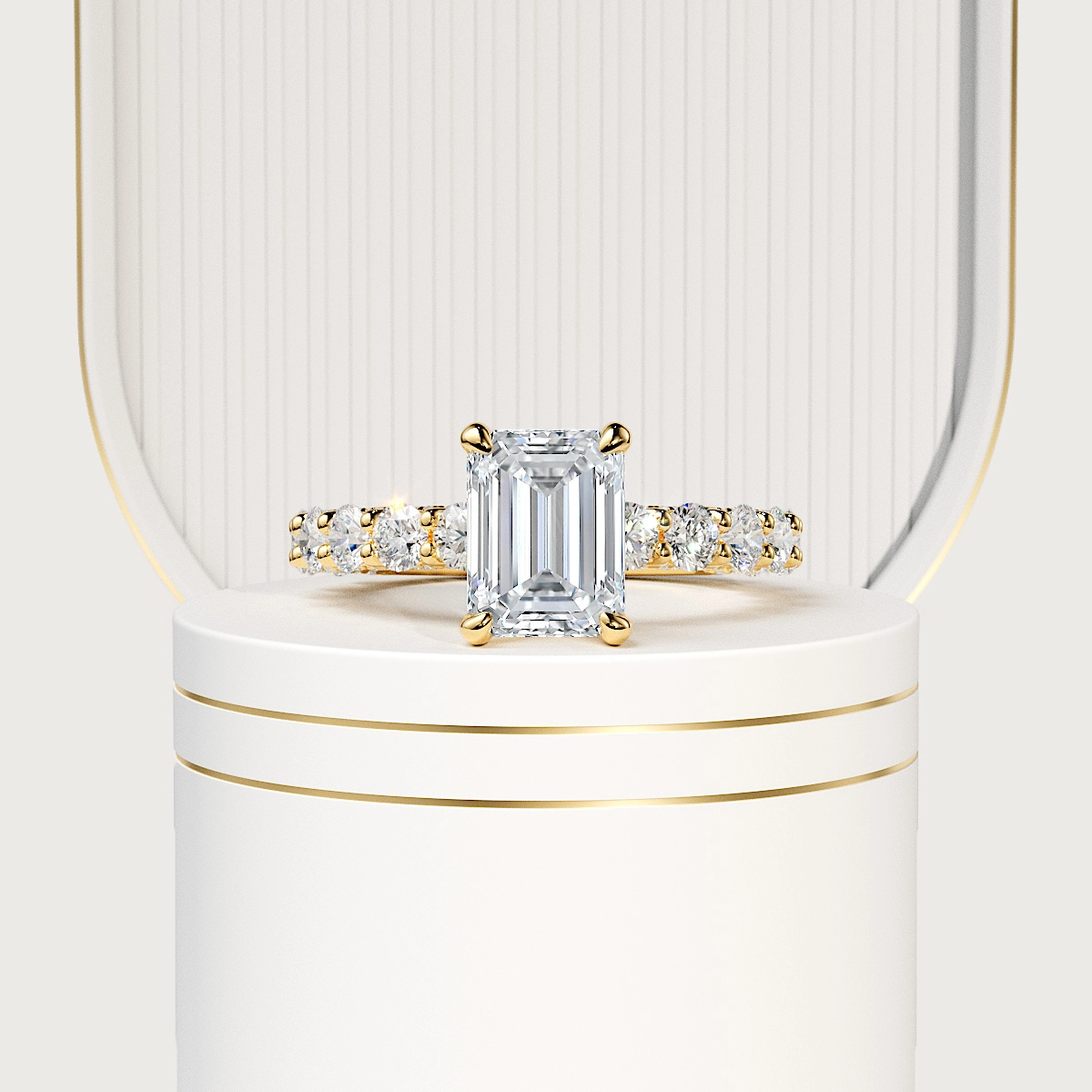
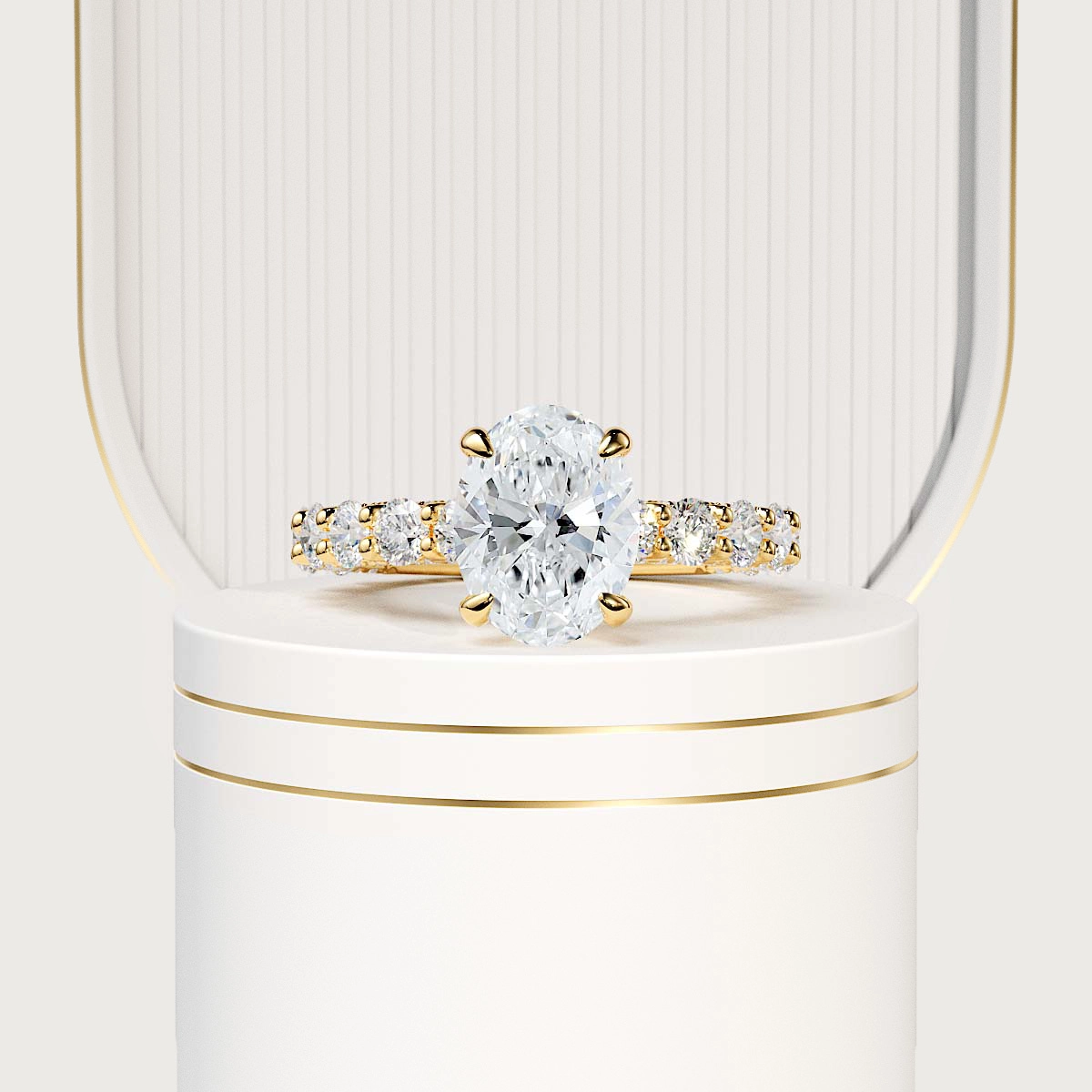



Lab Grown Diamond FAQ
Depending on the color, clarity, and carat size, it usually takes around a month’s time to grow lab made diamonds. Once fully formed, they are then cut and polished to be set on a piece of jewelry or sold as loose diamonds.
To the naked eye, one can’t tell apart between lab grown and mined diamonds. It is because they look the same and have the same chemical composition as well as physical and optical properties.
We use the same grading standards as natural diamonds. Each stone comes with a certificate detailing its cut, color, clarity, and carat weight. This raises another question – do lab grown diamonds pass a diamond tester? The answer is YES!
Both lab diamond and earth-mined diamonds score 10 on Mohs Scale, and perfectly pass a diamond tester.
The value of a diamond is measured internationally through the 4Cs of diamond quality, which are cut, color, clarity, and carat weight. Each of these characteristics is measured and graded in a specific way and recorded in the grading report. It’s important to review this information when you buy lab diamonds to ensure you’re getting the best quality.
Absolutely! We offer customization options for most of our pieces. Contact our design team to discuss your unique vision.
We offer complimentary hassle-free 45-day returns and exchanges to guarantee that your purchase meets your expectations.
Yes, we ship worldwide. Shipping costs and delivery times vary by location.
Care instructions for man made diamonds are the same as for natural diamonds. We include a care guide with every purchase.
While we’re primarily online, we do offer virtual consultations where you can get a detailed view of our pieces. If you’re in Montreal, you’re welcome to visit us for an in-person viewing as well!
Typically, custom orders take 2 weeks, depending on the complexity of the design. But our in stock items are shipped overnight.
Yes, all our pieces come with a lifetime year warranty against manufacturing defects in materials and workmanship for the life of your jewelry.




 My Account
My Account  My Bag
My Bag  My Wishlist
My Wishlist 
